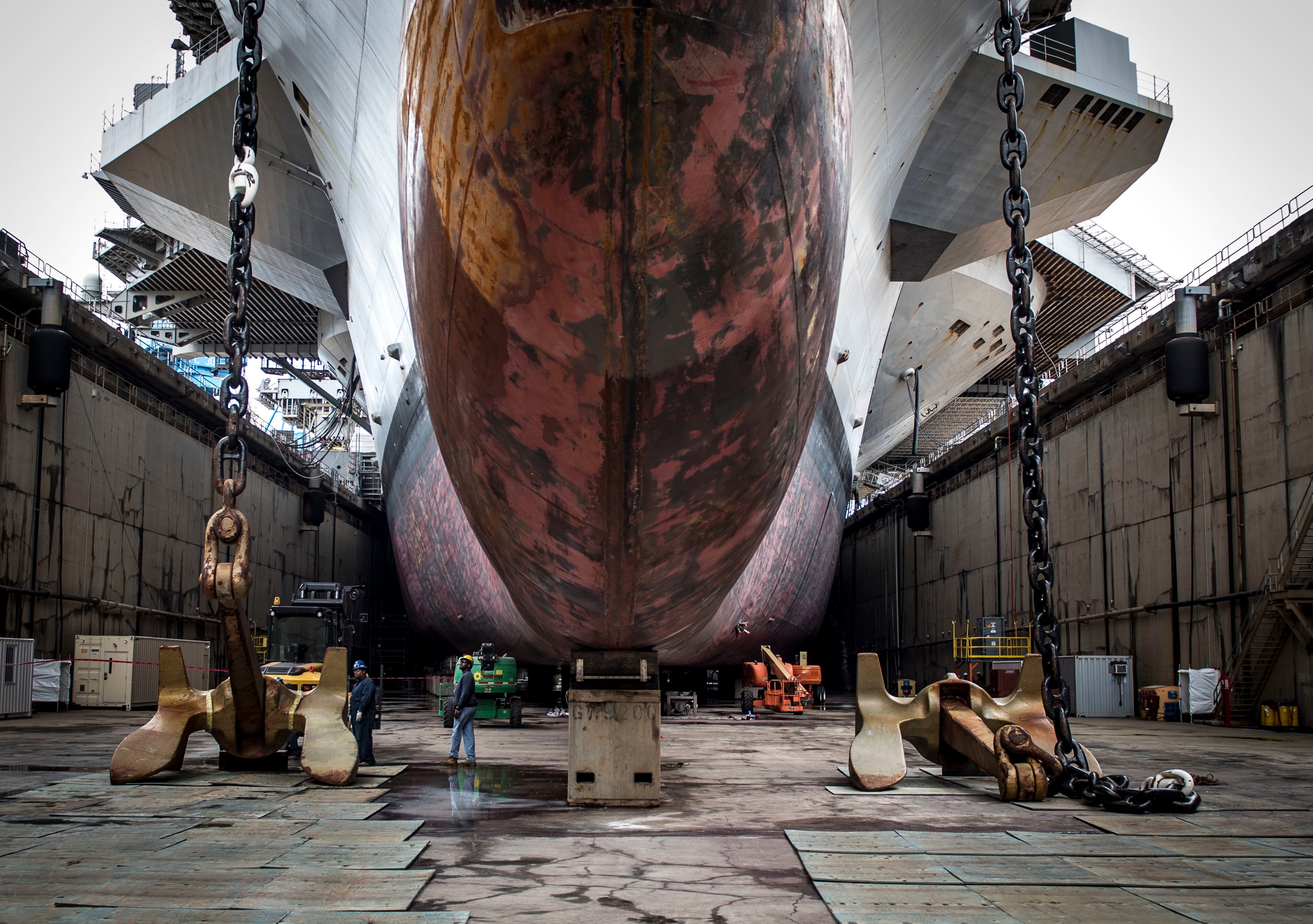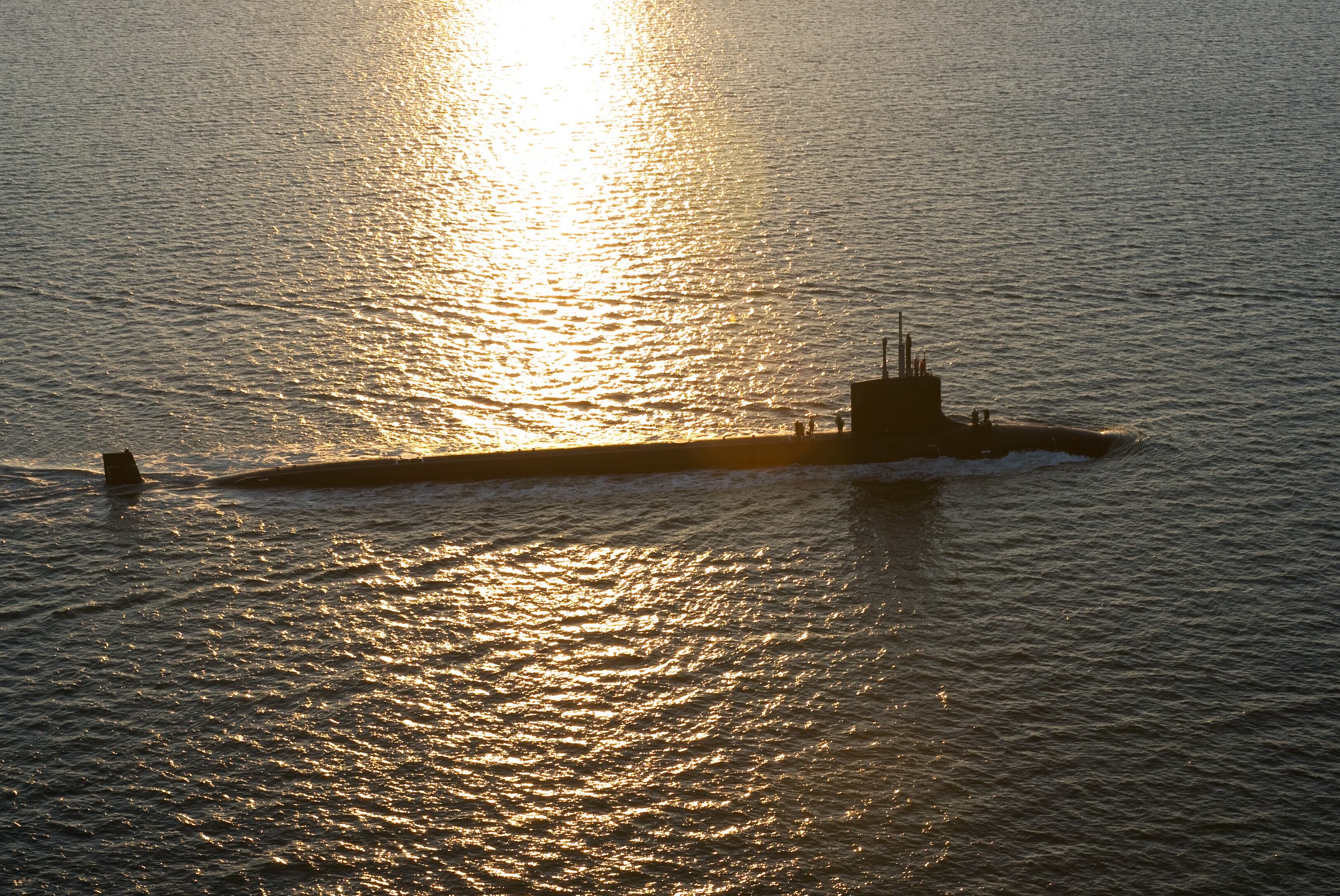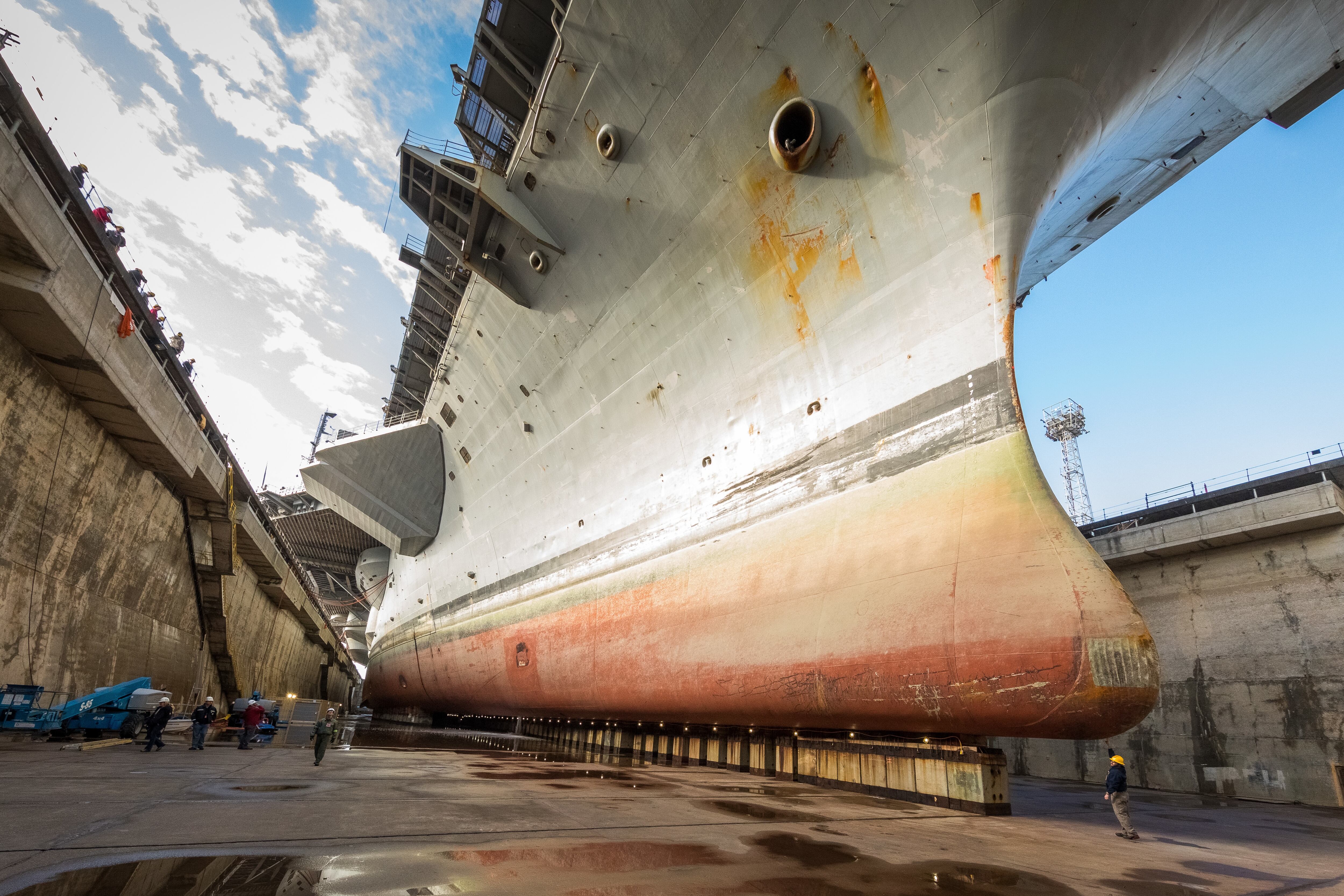WASHINGTON ― As the U.S. Navy grapples with outdated maintenance facilities and a fleet stretched by maintenance backlogs, a bipartisan, bicameral group of lawmakers are proposing a $25 billion cash infusion for public and private shipyards timed for Congress’ debate on a massive infrastructure package.
The additional money would fully fund the Navy’s ongoing 20-year, $21 billion public shipyard recapitalization plan in a single year, with flexibility to spend that money over time. Another $4 billion for private shipyards that build and maintain the fleet makes up the rest.
The 11-page Shipyard Act, introduced Wednesday, comes after President Joe Biden proposed a $2.25 trillion infrastructure package and Republicans made a $568 billion counteroffer.
The sponsors ― all from shipbuilding states ― pointed to both the economic value of the yards and how improvements would support a larger fleet to counter China’s growing naval ambitions.
Sen. Roger Wicker, R-Miss., is leading the legislation with Democrats Tim Kaine of Virginia and Jeanne Shaheen of New Hampshire; as well as Maine Sens. Angus King, an independent, and Susan Collins, a Republican. Rep. Rob Wittman, who is the top Republican on the House Seapower and Projection Forces Subcommittee, is sponsoring a House version with Rep. Mike Gallagher, R-Wis.
“As lawmakers consider ways to improve our nation’s infrastructure, the facilities that support our Navy fleet should be a part of the conversation,” Wicker said in a statement. “Congress has already taken the important step of committing to a larger Navy, but our shipyards are having trouble servicing today’s 296-ship fleet, and are clearly insufficient to maintain the 355-ship or larger fleet we need to counter China, Russia, and other adversaries. Now is the time to provide our Navy leaders the support they need to grow and preserve our fleet for generations to come.”
RELATED

The lawmakers argue their bill will help address a backlog of modernization, maintenance and expansion projects the Navy has identified at public shipyards, as well as provide flexibility to support capital improvement projects and other investments at the commercial yards needed to maintain and grow the fleet.
“Virginia’s public and private shipyards are crucial to strengthening our national security,” said Kaine, who chairs the Senate subpanel on military readiness. “This legislation would ensure that our sailors, shipbuilders, and ship repairers have the most up-to-date tools, equipment, and facilities to ensure our Navy remains ready to protect our nation.”
The bills are meant to cover improvements to shipyard infrastructure, construction of new dry docks and other items to enable shipyards used by the Navy to keep pace with the service’s needs. It would provide flexible, multiyear funding through the Defense Production Act, which could be spent at the Navy secretary’s discretion, to include:
- $21 billion to accelerate the Navy’s Shipyard Infrastructure Optimization Program, or SIOP, aimed at improving its four public shipyards in Portsmouth, Virginia; Kittery, Maine; Pearl Harbor, Hawaii; and Bremerton, Washington. (It would follow the $1.8 billion already spent on SIOP since 2018.)
- $2 billion to upgrade commercial shipyards, subcontractors and suppliers that maintain and repair the Navy’s fleet. There are about 20 major repair shipyards, mainly in Alabama, California, Florida, Hawaii, Mississippi, South Carolina, Virginia, Washington and Wisconsin.
- Another $2 billion would upgrade the commercial shipyards, subcontractors and suppliers that build the fleet. Those are Ingalls Shipbuilding in Mississippi, Austal USA in Alabama, Newport News Shipbuilding in Virginia, Electric Boat in Connecticut and Rhode Island, Bath Iron Works in Maine, Fincantieri Marinette Marine in Wisconsin, and NASSCO General Dynamics in California.
The Navy and industry will likely welcome the proposal, as private shipyards need to expand capacity to build a larger fleet, Jerry Hendrix, a retired U.S. Navy captain and an analyst with The Telemus Group, said in a recent op-ed for the Wall Street Journal.
“There simply isn’t enough capacity to expand and service the fleet, which is why the Navy hasn’t grown much even as its budget has expanded,” Hendrix wrote. “The production of Virginia-class fast-attack submarines and Burke-class destroyers has fallen six to 12 months behind schedule even as lawmakers say they want to buy more of these ships.”

While it’s not explicit in the legislation, the idea behind investing taxpayer dollars in private shipyards is that the government would come to a cost-sharing arrangement with the companies involved. The thinking goes that without a funding boost, companies aren’t necessarily incentivized to undertake major capital investments like building new dry docks.
As to maintenance, the proposal comes a month after service officials disclosed they were reworking the SIOP plan and acknowledged that its public shipyards can’t meet the needs of the current fleet, let alone accommodate a growing fleet. The head of Naval Sea Systems Command, Vice Adm. Bill Galinis, told lawmakers the sea service was studying how much money it would need to accelerate SIOP by five or 10 years.
Last year, the Heritage Foundation’s Maiya Clark reported on how many of the Navy’s dry docks are not suitable for the task of even maintaining the current fleet. For example, many dry docks that can currently service the Los Angeles-class attack submarines are too short to service the newest Block V Virginia-class submarine, which is 83 feet longer than earlier variants.
The argument for the legislation is that any delay will worsen the Navy’s maintenance shortfalls, as documented by multiple government watchdog agencies. Fewer ships were available for operations because the Navy’s four shipyards, from 2015 through 2019, completed 75 percent of maintenance periods late for aircraft carriers and submarines, a 2020 Government Accountability Office report found.
A Congressional Budget Office report on submarine maintenance delays at the Navy’s understaffed four shipyards recommended increasing capacity by hiring more workers and shifting more maintenance to private yards. Infrastructure improvements weren’t a recommendation, but it did acknowledge the Navy projects SIOP improvements would yield a 5 percent efficiency gain.
Chief of Naval Operations Adm. Michael Gilday in December acknowledged the dry dock shortfalls and said the Navy considers SIOP a “high priority,” adding that the service plans to invest nearly $1 billion in military construction dollars per year across the four shipyards.
“These dry docks on average, as you know, are over 100 years old and we’ve neglected them for too long,” he said. “And this is a strategic decision by the department to make this a priority and put the money where we need to, or we can’t sustain the fleet of the future. As you know, we’re challenged to sustain the fleet that we have now.”
Joe Gould was the senior Pentagon reporter for Defense News, covering the intersection of national security policy, politics and the defense industry. He had previously served as Congress reporter.





